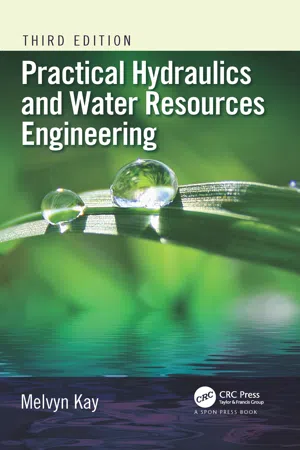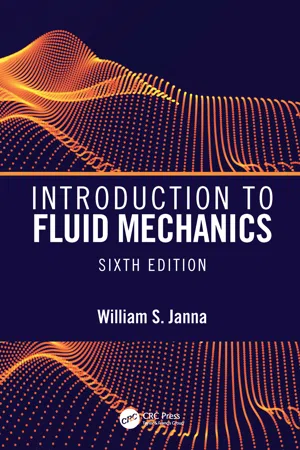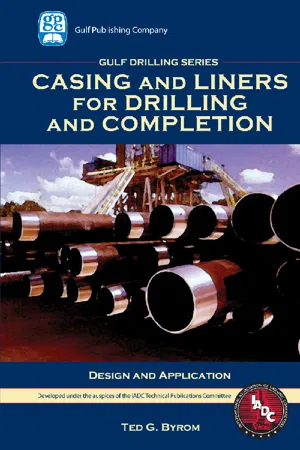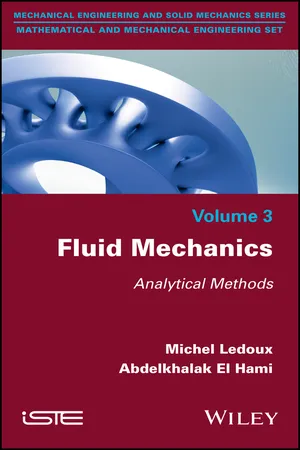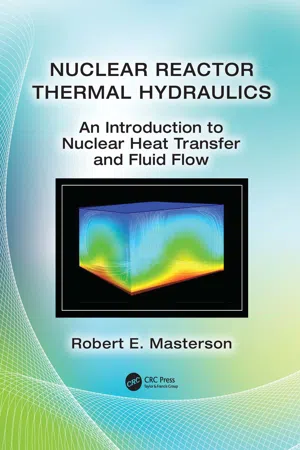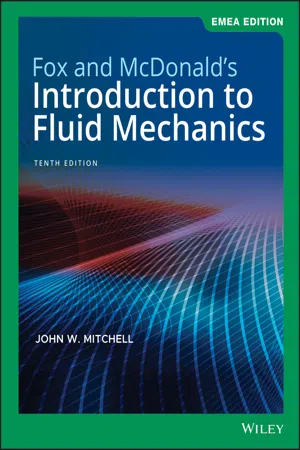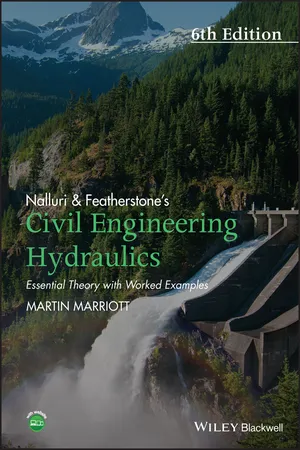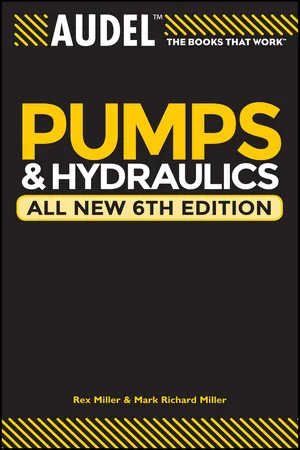Technology & Engineering
Hydrostatics
Hydrostatics is the study of fluids at rest and the forces they exert on solid surfaces. It deals with the principles of pressure distribution in fluids and the behavior of floating and submerged bodies. Key concepts in hydrostatics include Pascal's law, Archimedes' principle, and the calculation of buoyant force. Understanding hydrostatics is essential in various engineering applications, such as designing ships and hydraulic systems.
Written by Perlego with AI-assistance
Related key terms
Related key terms
1 of 4
Related key terms
1 of 3
12 Key excerpts on "Hydrostatics"
- Melvyn Kay(Author)
- 2017(Publication Date)
- CRC Press(Publisher)
Chapter 2Water standing still
Hydrostatics2.1 INTRODUCTION
Hydrostatics is the study of water when it is not moving; it is standing still. It is important to civil engineers who are designing water storage tanks and dams. They want to work out the forces that water creates in order to build reservoirs and dams that can resist them. Naval architects designing submarines want to understand and resist the pressures created when they go deep under the sea. The answers come from understanding Hydrostatics. The science is simple both in concept and in practice. Indeed, the theory is well established and little has changed since Archimedes (287–212 BC ) worked it out over 2000 years ago.2.2 PRESSURE
The term pressure is used to describe the force that water exerts on each square metre of some object submerged in water, that is, force per unit area. It may be the bottom of a tank, the side of a dam, a ship or a submerged submarine. It is calculated as follows:pressure =Introducing the units of measurementforce area.pressure(=kN/m 2).force( kN )area(m 2)Force is in kilo-Newtons (kN), area is in square metres (m2 ) and so pressure is measured in kN/m2 . Sometimes pressure is measured in Pascals (Pa) in recognition of Blaise Pascal (1620–1662) who clarified much of modern day thinking about pressure and barometers for measuring atmospheric pressure.1 Pa = 1 N/m2 .One Pascal is a very small quantity and so kilo-Pascals are often used so that1 kPa = 1 kN/m2 .Although it is in order to use Pascals, kN/m2 is the measure of pressure that engineers tend to use and so this is used throughout this text (see example of calculating pressure in Box 2.1 ).2.3 FORCE AND PRESSURE ARE DIFFERENT
Force and pressure are terms that are often confused. The difference between them is best illustrated by an example:- eBook - ePub
- William S. Janna(Author)
- 2020(Publication Date)
- CRC Press(Publisher)
2 Fluid StaticsIn this chapter, we study the forces present in fluids at rest. Knowledge of force variations—or, more appropriately, pressure variations—in a static fluid is important to the engineer. Specific examples include water retained by a dam or bounded by a levee, gasoline in a tank truck, and accelerating fluid containers. In addition, fluid statics deals with the stability of floating bodies and submerged bodies and has applications in ship hull design and in determining load distributions for flat-bottomed barges. Thus, fluid statics concerns the forces that are present in fluids at rest, with applications to various practical problems.After completing this chapter, you should be able to:- Discuss pressure and pressure measurement;
- Apply the hydrostatic equation to manometers;
- Develop equations for calculating forces on submerged surfaces;
- Examine problems involving stability of partially or wholly submerged objects.
2.1 PRESSURE AND PRESSURE MEASUREMENT
Because our interest is in fluids at rest, let us determine the pressure at a point in a fluid at rest. Consider a wedge-shaped particle exposed on all sides to a fluid as illustrated in Figure 2.1a . Figure 2.1b is a free-body diagram of the particle cross section. The dimensions Δx , Δy , and Δz are small and tend to zero as the particle shrinks to a point. The only forces considered to be acting on the particle are due to pressure and gravity. On either of the three surfaces, the pressure force is F = pA . By applying Newton’s second law in the x - and z -directions, we get, respectively,FIGURE 2.1 A wedge-shaped particle.∑F x=p xΔ z Δ y −p sΔ s Δ y sin θ =ρ 2Δ x Δ y Δ za x= 0
where∑F z=p zΔ x Δ y −p sΔ s Δ y cos θ − ρ gΔ x Δ y Δ z2=ρ 2Δ x Δ y Δ za z= 0p x , p z , and p s are average pressures acting on the three corresponding facesa x and a z are the accelerationsρ is the particle densityThe net force equals zero in a static fluid. After simplification, with a x = az - eBook - ePub
- Richard Gentle, Peter Edwards, William Bolton(Authors)
- 2001(Publication Date)
- Newnes(Publisher)
The purpose of this chapter is to teach you the fundamentals of engineering fluid mechanics in a very general manner so that you can understand the way that forces are produced and transmitted by fluids that are, first, essentially at rest and, second, in motion. This will allow you to apply the physical principles behind some of the most common applications of fluid mechanics in engineering. Most of these principles should be familiar – conservation of energy, Newton’s laws of motion – and so the chapter concentrates on their application to liquids.Objectives By the end of this chapter, the reader should be able to:• recognize some fluid properties and types of flow; • understand the transmission of pressure in liquids and its application to hydraulics; • use manometry to calculate pressures; • calculate hydrostatic forces on plane and curved submerged surfaces; • understand Archimedes’ principle and buoyancy; • employ the concept of continuity of flow; • define viscosity; • calculate pressure drops in pipe flow; • use Bernoulli’s equation to measure flow rate and velocity; • apply the momentum principle to liquids in jets and pipes.3.1 Hydrostatics – fluids at rest
The first half of this chapter is devoted to Hydrostatics, the study of fluids at rest. It is a subject that is most commonly associated with civil engineers because of their interest in dams and reservoirs, but it is necessary for mechanical engineers too as it leads on to the subject of hydrodynamics, fluids in motion.What are fluids?
Fluids are any substances which can flow. We normally think of fluids as either liquids or gases, but there are also cases where solids such as fine powders can behave as fluids. For example, much of the ground in Japan is made up of fine ash produced by the many volcanoes which were active on the islands until quite recently. Earthquakes are still common there and the buildings run the risk of not only collapsing during the tremors but also sinking into the ground as the powdery ash deposits turn into a sort of fluid due to the vibration. Nevertheless we shall only consider liquids and gases for simplicity, and most of the time we shall narrow the study down even further to liquids because we can look at the basic principles without the complications that apply to gases because of their compressibility. There are only a few major differences between liquids and gases, so let us have a look at them first. - eBook - ePub
- Ted G. Byrom(Author)
- 2013(Publication Date)
- Gulf Publishing Company(Publisher)
CHAPTER 2Basic Calculations and Hydrostatics
2.1 Introduction
Hydrostatics is a subject so simple we should not even have to devote space to it. If you actually believe that, then you have not worked in the oil field for very long. The truth is that Hydrostatics is a relatively simple subject, but the problem is that its simplicity is often deceptive. Most texts and courses on fluid mechanics devote very little space or time to Hydrostatics because the interesting part of fluid mechanics is fluid dynamics not fluid statics, consequently many authors and instructors treat fluid statics as trivial. And I suppose it might justifiably be considered trivial relative to hydrodynamics and other more difficult topics, but the net result is that too many engineers get through it with little more than a superficial understanding. Too often, some of the simplifying assumptions become imbedded as axioms of truth. For instance many engineers (and even a few distinguished professors) go through their entire careers believing that water is incompressible. And in our particular discipline, the concept of buoyancy, for example, has led to all sorts of incredible nonsense, some of which has even been published in textbooks and peer-reviewed literature. Take a look at the example in Figure 2-1 to illustrate a bit about buoyancy.Figure 2-1 Smooth tube suspended in a vertical wellThe figure shows a smooth tube suspended vertically in an idealized, vertical well. The tube has a sliding seal assembly on the bottom that allows frictionless vertical motion in a concentric packer. It is supported entirely at the surface, where a weight indicator measures its suspended weight. Both cases are identical, except in case A the annular space is filled with air and in case B the annular space is filled with water. Now,1. Will the weight indicator show that the weight of A is greater than B, less than B, or the same? 2. Suppose the tube in both cases is 4½-in. API ST&C casing, will the weight indicator show that the weight of A is greater than B, less than B, or the same? - eBook - ePub
Fluid Mechanics
Analytical Methods
- Michel Ledoux, Abdelkhalak El Hami(Authors)
- 2017(Publication Date)
- Wiley-ISTE(Publisher)
2 Immobile Fluid2.1. Introduction
The chapter on fluid statics is constituted by the study of immobile fluids. This situation is found every time the system of forces applied to each fluid element is equivalent to a zero force. In what follows from our knowledge of fluid statics, there are two types of problem that mobilize:- 1) Determining the interface’s position, which involves researching the pressure distribution of a fluid group at certain points. This invokes applying the fundamental theorem of fluid statics.
- 2) Calculating the thrusts exerted on a simple or complex surface.
2.1.1. The fundamental theorem of fluid statics
The surface forces are reduced to the normal components (as a general rule, tangential components are determined by the velocity field). It is shown that the pressure in one point of a fluid at equilibrium is isotropic (it does not depend on the of the dS surface in question).There is only one physics principle written on this, which can be outlined thus: “if a fluid domain is immobile, the resultant forces applied on it are zero”. Beyond that, this principle can be written in various forms in different hypothesis frameworks.NOTE.– This fundamental statics principle is actually a particular case of Newton’s first principle, or the principle of inertia, when the fluid’s velocity is zero. In the absence of a force, the movement remains unchanged. If the fluid is initially immobile, it continues to have no movement. a) Hydrostatics The study of Hydrostatics is based on two hypotheses: fluid is incompressible; volume forces are reduced to gravity.A simple demonstration allows us to write a relation that can be generally applied. Let us write the equilibrium of a fluid cylinder with the height of z2 – z1 in which the bases of area dS are horizontal on the dimensions: z2 and z1 on a vertical upward axis. On these dimensions, the pressures are p2 and p1 - eBook - ePub
Nuclear Reactor Thermal Hydraulics
An Introduction to Nuclear Heat Transfer and Fluid Flow
- Robert E. Masterson(Author)
- 2019(Publication Date)
- CRC Press(Publisher)
14Fluid Statics and Fluid Dynamics
14.1 Static Behavior of Fluids
Before we discuss how fluids behave in a reactor when the coolant pumps are turned on, we would first like to discuss how fluids behave when the coolant pumps are turned off. In a fresh core where there is no decay heat, the coolant can be considered to be stationary . The subject of how fluids behave when they are stationary is called fluid statics , and the study of how fluids behave when they are in motion is called fluid dynamics . Normally, the static behavior of fluids is easier to understand than the dynamic behavior because we do not have to track the motion of the fluid through the core. When a fluid is at rest, the forces acting on the fluid are balanced, and the pressure on a fluid molecule is the same in all directions. Classically, the pressure p is defined as the force that a fluid exerts on a unit surface normal or perpendicular to the applied force .Definition of the Pressure
p = Force/Area = F/A(14.1)In the SI system of units, the pressure is measured in N/m2 (Pa), and in the British system of units, it is measured in lb/in.2 (PSI). The pressure exerted by a fluid on a solid surface is shown in Figure 14.1 . Hydrostatics is the study of the forces that a fluid exerts on a submerged object such as a dam or a nuclear fuel rod.The hydrostatic force that has the greatest effect on the behavior of static fluids is gravity . Once the size of the gravitational acceleration is specified, the pressure at every point in a fluid becomes a function of depth. The product of the depth, the density, and the gravitational constant also give rise to buoyancy-induced forces , which are important during natural convection.FIGURE 14.1 - Robert W. Fox, Alan T. McDonald, John W. Mitchell(Authors)
- 2020(Publication Date)
- Wiley(Publisher)
Although fluid statics problems are the simplest kind of fluid mechanics problems, this is not the only reason we will study them. The pressure generated within a static fluid is an important phenomenon in many practical situations. Using the principles of Hydrostatics, we can compute forces on submerged objects, develop instruments for measuring pressures, and deduce properties of the atmosphere and oceans. The principles of Hydrostatics also may be used to determine the forces developed by hydraulic systems in applications such as industrial presses or automobile brakes.In a static, homogeneous fluid, or in a fluid undergoing rigid‐body motion, a fluid particle retains its identity for all time, and fluid elements do not deform. We may apply Newton’s second law of motion to evaluate the forces acting on the particle.3.1 The Basic Equation of Fluid Statics
The first objective of this chapter is to obtain an equation for computing the pressure field in a static fluid. We will deduce what we already know from everyday experience, that the pressure increases with depth. To do this, we apply Newton’s second law to a differential fluid element of massd m = ρ d V, with sidesd x,d y, andd z, as shown in Fig. 3.1 . The fluid element is stationary relative to the stationary rectangular coordinate system shown.From our previous discussion, recall that two general types of forces may be applied to a fluid: body forces and surface forces. The only body force that must be considered in most engineering problems is due to gravity. We will not consider body forces caused by electric or magnetic fields.For a differential fluid element, the body force isd=F →Bg →d m =g →ρ d Vwhereg →is the local gravity vector, ρ is the density, andd Vis the volume of the element. In Cartesian coordinatesd V = d x d y d z, sod= ρF →Bg →d x d y d zIn a static fluid there are no shear stresses, so the only surface force is the pressure force. Pressure is a scalar field,p = pand in general we expect the pressure to vary with position within the fluid. The net pressure force that results from this variation can be found by summing the forces that act on the six faces of the fluid element.x , y , zLet the pressure be p at the center, O , of the element. To determine the pressure at each of the six faces of the element, we use a Taylor series expansion of the pressure about point O- M J Lewis(Author)
- 1990(Publication Date)
- Woodhead Publishing(Publisher)
3Properties of fluids, Hydrostatics and dynamics
3.1 INTRODUCTION
The properties of fluids both at rest (Hydrostatics) and in motion are of relevance in the study of food-processing operations. This chapter concentrates on fluid statics and dynamics whereas Chapter 4 concentrates on the property of viscosity, methods for measuring it, and values for different types of food. Inevitably, there is some degree of overlap between the subject matter. Many foods are fluid in nature e.g. milk, fruit juices, oils emulsions, pastes and suspensions, as are most of the heat transfer fluids, such as hot water, steam, refrigerants and air, used for heating, drying, chilling and freezing operations.3.2 Hydrostatics
When an object is immersed in a fluid, it is subjected to a pressure because of the weight of the fluid acting on top of it. The factors affecting the pressure will be the density of the fluid and the depth of immersion. In Fig. 3.1(a) thepressure at A is equal to the pressure on the surface plus the pressure due to column of liquid above A. Thus,p A=p s+ ρ ghFig. 3.1 Fluid statics: (a) variation in pressure with depth; (b) open-tube manometer.(see section 1.17 for definitions of pressure and pressure units) where p A (N m− 2 ) is the pressure at A, p s (N m− 2 ) is the surface pressure, ρ (kg m− 3 ) is the fluid density and h (m) is the depth of immersion.The pressure on the surface can be either atmospheric pressure for an open tank, or above or below atmospheric pressure for a sealed or pressurized tank. The pressure at B will be the same as that at A, whilst the pressure at C will be greater.3.2.1 Pressure measurement
A manometer, which is a glass tube shaped in the form of a U and illustrated in Fig. 3.1(b)- eBook - ePub
- A. L. Stanford, J. M. Tanner(Authors)
- 2014(Publication Date)
- Academic Press(Publisher)
fluid dynamics , the study of fluids in motion. Fluid statics entails the interaction of fluids with their containers, with other fluids, and with solids. Included in the study of statics is the physics of buoy ancy, a practical aspect of fluid studies. Another practical application of fluid statics is the use of Pascal’s law, which treats the transmission of pressure in confined fluids (hydraulic systems). The fundamental relationships of fluid dynamics and characteristics of fluid flow will be described. Some idealized (and, therefore, simplified) descriptions and analyses of fluid flow will follow. Finally, our brief study of fluid motion will conclude with a few practical applications of fluid mechanics.9.1 The Fluid State
Our concern in this chapter is primarily with the macroscopic, or gross, nature of fluids, and so we will treat fluids as if they were continuous media, even though we know that all matter is composed of molecular, atomic, or subatomic particles. We must first, however, determine the fundamental properties, that is, the microscopic character, of fluids that distinguish them from solids. Therefore, we now appeal to the particulate nature of matter to establish the properties of fluids that we will use to describe and analyze them macroscopically.At the microscopic level, all matter is composed of particles that are constantly in random motion. The particles in a solid are strongly bound together; their random motion is confined to jiggling about equilibrium positions that are virtually fixed relative to each other. Thus solids are relatively rigid. The particles in a gas, on the other hand, essentially interact only during brief, intense collisions with other particles of the gas or with the walls of their container. (We say “essentially” because there are, in fact, other forces like gravitational attraction that are present but are negligible compared to the collision forces.) Thus the particles in a gas are not bound together at all, and a gas will fill any container in which it is confined. Gas particles are in chaotic random motion: They mix thoroughly. Particles within a liquid are bound to each other weakly. They are bound to neighboring particles more than are those in gases but less than are those in solids. The motion of particles in a liquid is random but not as chaotic as the motion of particles of a gas. The attractive forces between particles in a liquid are sufficiently strong on the average to make the liquid cohesive (it hangs together, so to speak) yet are weak enough to permit the liquid to flow. In flowing, the particles of the liquid pass one another easily without macroscopic separation of the mass of liquid. - eBook - ePub
Stream Hydrology
An Introduction for Ecologists
- Nancy D. Gordon, Thomas A. McMahon, Brian L. Finlayson, Christopher J. Gippel, Rory J. Nathan(Authors)
- 2013(Publication Date)
- Wiley(Publisher)
6
Water at Rest and in Motion
6.1 General
In contrast to other water bodies, the most noticeable feature of streams is their one-way flow, guided by the influence of gravity. Yet within this unidirectional motion, water molecules follow unpredictable paths seemingly of their own choosing. Like the movement of traffic on a freeway, the general motion can be described in terms of average forward progress. However, the detours, halts and starts of an individual vehicle—or an individual water molecule—defy analysis. Thus one should begin a study of fluid mechanics under the premise that the tools for describing the behaviour of water are only approximations. Nevertheless, by making appropriate simplifying assumptions and generalizations some fascinating traits of the movement of water ‘en masse’ can be examined and described. There is a large amount of literature on fluid mechanics which is appropriate for engineering applications, and this provides a framework upon which biologists can build to describe the complex interactions of organisms with their flowing environment.This chapter has been broken into two main streams of study: Hydrostatics and hydrodynamics. Hydrostatics is the study of water (hydro) at rest (static) and includes the principles of pressure and buoyancy. These principles hold true whether the water is at rest or in motion. However, as soon as a fluid begins to move, viscosity enters the picture, and the study of hydrodynamics is therefore more complex.Hydrodynamics can be further divided into the study of fluid motion in the micro-environment and in the macroenvironment. In the micro-environment near solid surfaces, viscosity has an important effect on fluid behaviour. Here, the focus is on patterns of viscous action as water passes around a surface, creating lift and drag on sediment particles and affecting the lives of small organisms which live on surfaces within the stream. At this scale, turbulence is manifested in the eddies and velocity fluctuations near solid surfaces. In the macro-environment - eBook - ePub
Nalluri And Featherstone's Civil Engineering Hydraulics
Essential Theory with Worked Examples
- Martin Marriott(Author)
- 2016(Publication Date)
- Wiley-Blackwell(Publisher)
Chapter 2 Fluid Statics2.1 Introduction
Fluid statics is the study of pressures throughout a fluid at rest and the pressure forces on finite surfaces. Since the fluid is at rest there are no shear stresses in it. Hence the pressure p at a point on a plane surface (inside the fluid or on the boundaries of its container), defined as the limiting value of the ratio of normal force to surface area as the area approaches zero size, always acts normal to the surface and is measured in newtons per square metre (pascals, Pa) or in bars (1 bar = 105 N/m2 or 105 Pa).2.2 Pascal’s law
Pascal’s law states that the pressure at a point in a fluid at rest is the same in all directions. This means it is independent of the orientation of the surface around the point.Consider a small triangular prism of unit length surrounding the point in a fluid at rest (Figure 2.1 ).Since the body is in static equilibrium, we can write(i)and(ii)From Equation (i) p1 = p3 , since cos θ = AB/BC, and Equation (ii) gives p2 = p3 , since sinθ = AC/BC and W = 0 as the prism shrinks to a point.Figure 2.1Pressure at a point.2.3 Pressure variation with depth in a static incompressible fluid
Consider an elementary cylindrical volume of fluid (of length L and cross-sectional area dA) within the static fluid mass (Figure 2.2 ), p being the pressure at an elevation of y and dp being the pressure variation corresponding to an elevation variation of dy.For equilibrium of the elementary volume, or[2.1]Figure 2.2 - eBook - ePub
- Rex Miller, Mark Richard Miller, Harry L. Stewart(Authors)
- 2011(Publication Date)
- Audel(Publisher)
dynamic lift.Figure 2-6Static head and dynamic head.Figure 2-7Correct points of measurement for head and lift.Hydrostatics
The branch of hydraulics dealing with the pressure and equilibrium (at rest) of water and other liquids is known as Hydrostatics. Water is the liquid that is most often considered in studying the basic principles of hydraulics, but other liquids are also included.Figure 2-8Correct measurement for static lift with respect to pump operation. Static lift is measured from the surface of the water supply to the center point of the inlet opening of the pump.Static Head
The height above a given point of a column or body of water at rest (the weight of the water causing pressure) is termed static head. With respect to pump operation, the head is measured from the center point of the pump outlet connection (see Figure 2-7 ).In most calculations, it is common practice to estimate the pressure per foot of head at 0.5 psi. The correct value for calculating pressure of water per foot of static head is 0.43302 psi. This value is accurate for a water temperature of 62°F.Static Lift
The height to which atmospheric pressure causes a column of water to rise above the source of supply to restore equilibrium is termed static lift (see Figure 2-8 ). The weight of the column of water (1 square inch of cross-sectional area) required to restore equilibrium is equal to the pressure exerted by the atmosphere (psi).The pressure of the atmosphere can be made available for lifting water from the source of supply to an elevated pump by removing air from the inlet pump (see Figure 2-9 ). In the left-hand diagram, the inlet pipe (before connection with the pump) presses downward on the surface of the water with equal pressure (psi) on both the inside and outside of the pipe, because the pipe is open at the top. If the end of the pipe is connected to a pump that removes air from the pipe to create a partial vacuum, the water rises to a height A (see Figure 2-9
Index pages curate the most relevant extracts from our library of academic textbooks. They’ve been created using an in-house natural language model (NLM), each adding context and meaning to key research topics.
Explore more topic indexes
Explore more topic indexes
1 of 6
Explore more topic indexes
1 of 4
